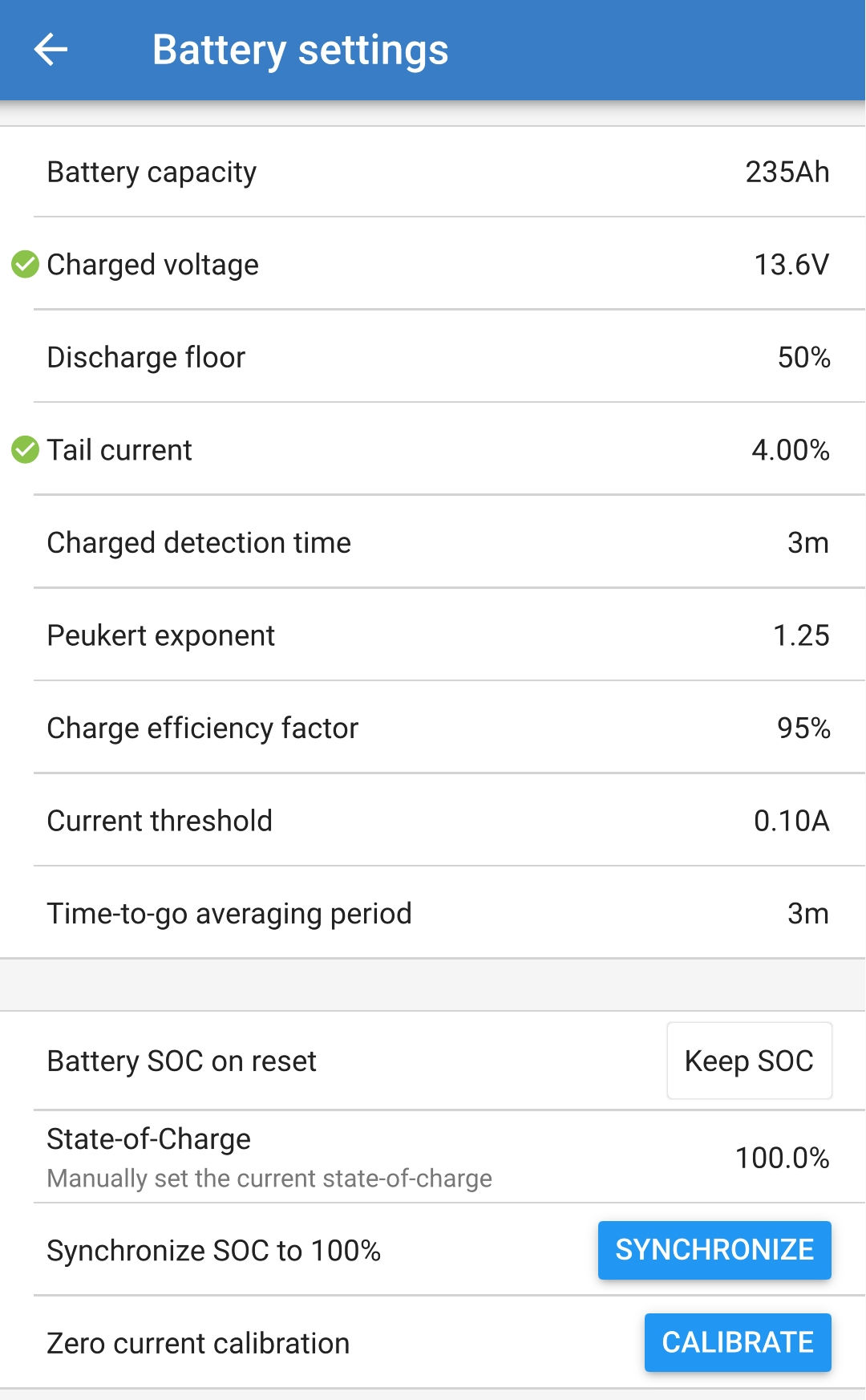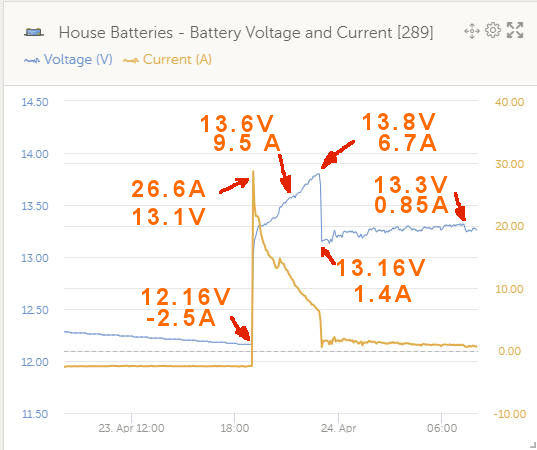I have a Progressive Dynamics PD9245C converter on my 2016 Winnebago Vista. I just replaced our house batteries with (2) 6 Volt SLIGC125 Duracell Ultra BCI Group GC2 6V 235AH Flooded Deep Cycle Golf Cart bateries wired in series (Not ready for Lithium yet and no room nor $'s for the batteries and additional mods needed for DC to DC charger). I don't have solar yet. I have a separate smart shunt for the starter battery and the starter battery was turned off. This is the Progessive Dynamics published charge wizard profile profile:
- BOOST Mode 14.4 Volts – Rapidly brings the RV battery up to 90% of full charge.
- ABSORPTION Mode 13.6 Volts – Safely completes the charge.
- STORAGE Mode 13.2 Volts – Maintains charge with minimal gassing or water loss.
- EQUALIZATION Mode 14.4 Volts – Every 21 hours for a period of 15 minutes prevents battery stratification & sulfation – the leading cause of battery failure.
I have a parasitic draw of 2.5 amps when RV is parked including a Home Assistant Server, hotspot, Aircube AC router, combustable gas monitor, etc. I ran a test for battery capacity. I setup 2 automations in Home Assistant that would connect the RV to shore power when either the SOC dropped below 80% reported by the smart shunt or the battery voltage dropped to 12.18 volts (accepted voltage for 60% SOC on 2-6 volt batteries). I'm using a Victron SmartShunt 500A on V4.14 firmware. The ambient temp during the test ranged between 54 F and 59 F.
I used the parasitic draw to put the load on the batteries and did not turn on any other devices nor did I start the engine.Settings in Smart Shunt:

This is the end of dischage/charge Cycle before the shore power was automatically turned back on to recharge the batteries. The SOC on the shunt was 83% but the batteries were actually discharged to 60% based on their voltage when the shore power turned back on.

When the battery voltage hit 13.6 volts during the bulk charging stage they were drawing 9.5 Amps. At his time, the SOC jumped to 100% which is not correct. It appears the charge wizard switched to absorption mode when the batteries hit 13.8 volts. With the parasitic draw, the voltage peaked at 13.3 volts not the 13.6 volts that is published to complete the charge and I would expect this would be the point when the SOC would change to 100%. I cannot eliminate the parasitic draw without losing communication to the RV and asking what options I have at this point.
Just a note that I was very disappointed to learn that I really only have 58 Amp Hours available to draw down the brand new battiers to 60% based on battery volage. It should have been closer to 70.5 amp hours (50% x 235 x 60%) based on SOC. This is only 82% of the published capacity.I'm glad I had used the battery voltage as a backup to turn the shore power back on before I could ruin the new batteries by over discharging using the SOC value from the smart shunt. I hope someone is out there that can help!
